
A French drain costs around $9,250 to install, but several factors will determine the final price you pay. Learn the cost to install French drains in this guide.
You’ll be playing badminton in no time


If water pools in your lawn after heavy rain, or you notice soggy ground when walking around your yard, it's time to take a closer look. Learning how to fix a soggy lawn is essential for maintaining a healthy yard. Excess water can lead to fungal diseases and a lack of grass growth. It can also prevent you from enjoying your lawn to the fullest. Dive into these 18 tips for fixing a soggy lawn.
A french drain provides a sunken channel for water to disperse into the soil surrounding your home. Installing this type of system requires digging a trench and hooking up pipe connections, among other tasks, so it's best to hire a professional french drain installation company for this project.
Allow the excess water in your lawn to evaporate before fixing your soggy, muddy lawn with other solutions. Pause on watering your lawn for at least three to five days. Check every day to see if the soil is dry. Once the lawn is dry, work through fixing the problem (with the other tips in this guide). You may also need to reduce your watering schedule for your lawn, especially while you diagnose and fix the root cause.
If you spot it early on, you can immediately address standing water on your lawn to prevent it from absorbing into the soil and creating a soggy, waterlogged lawn. Try using a shovel or a utility pump to remove standing water, then dump it down the nearest outdoor drain. Another option is grabbing a broom to push away puddles and disperse the water more evenly. You can also use a wet-dry shop vac if the flooding is only in a small area.
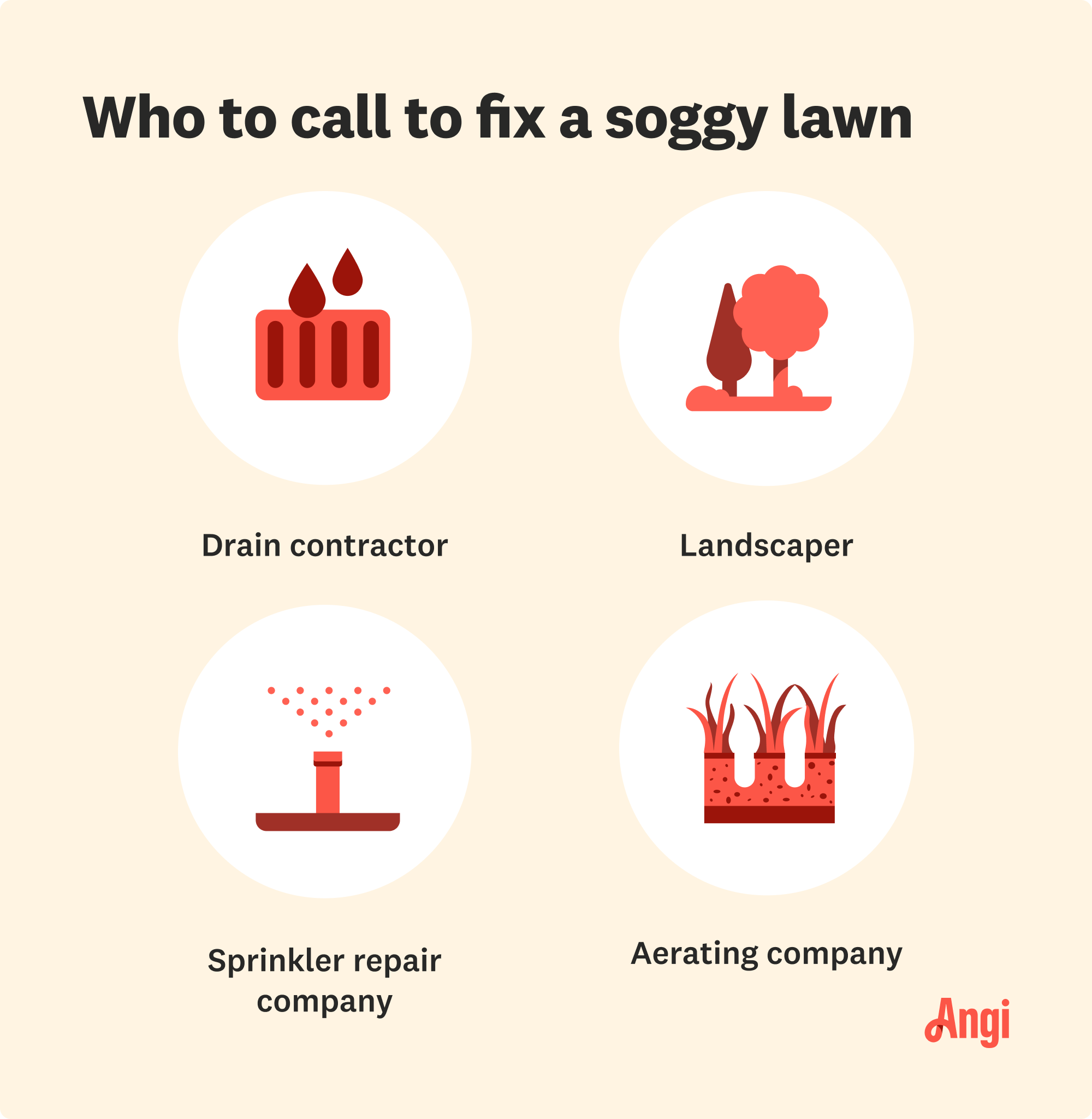
If you have significant water issues and aren’t sure how to fix a soggy, muddy lawn, contact a local sprinkler repair company. You may have an issue with your sprinkler heads or sprinkler valves. You can also contact a local lawn care service to assess your lawn and present the best solutions. Installing a sump pump or French drain might be necessary in some cases. Consulting with a pro can help you save time and money by ensuring you tackle your soggy lawn with the right solution.
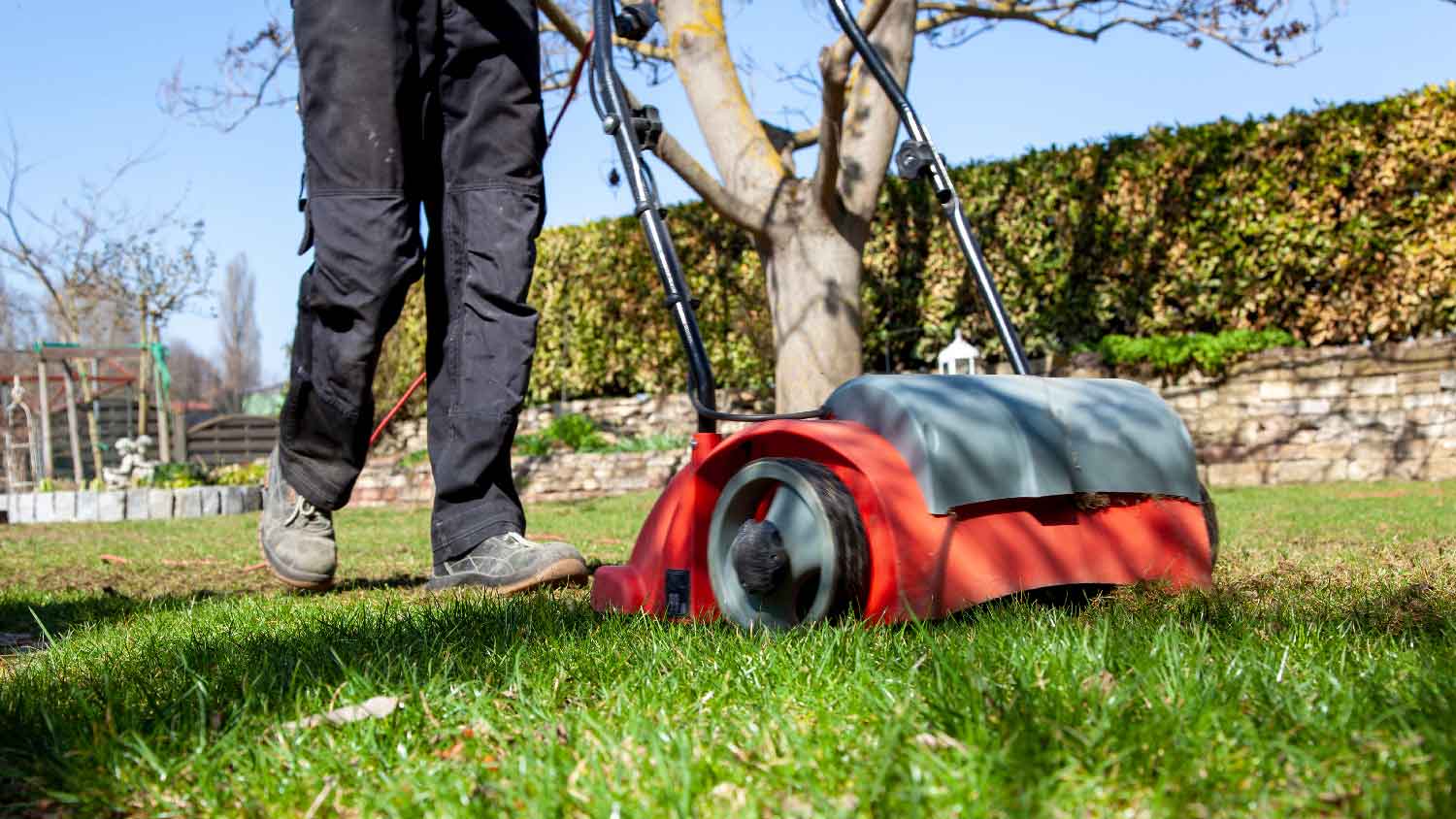
Lawn aeration helps your grass breathe and your soil absorb nutrients and water. Aerating also loosens compacted soil, leading to better drainage. Use a manual or push aerator on a small or mid-size lawn, or rent an electric aerator for a lawn over 1/2 acre. The aerator pulls out plugs in your soil and leaves them on the ground. The plugs will dissolve back into the soil over time.
Aeration is especially valuable for soggy lawns with high clay-content soil. You can aerate your lawn once a year, though some lawns only need it once every two to three years.
After aerating your lawn, add compost or compost mixed with horticultural sand (1-to-1 ratio) to add organic content to the soil. Sprinkle the mixture by hand, with a hand spreader, or with a push spreader. The beneficial microbes and earthworms from the compost help loosen the soil and improve drainage. Healthier soil also leads to deeper grass roots, which improves water absorption throughout your lawn.
If a small area sits lower than the rest of your lawn and tends to pool water, fill it with topsoil or compost. Even filling small areas requires lots of soil, so consider buying soil by the yard. If you use compost, you'll get the added benefits of improving the soil quality and reducing how compacted it is, making for better drainage.
If water flows toward your house and pools near your foundation, you may need to regrade your lawn, which is best left to a professional due to the size and complexity of the job. A local landscaping company can regrade an entire lawn to ensure your home stays clear of flooding and water damage. A contractor can use a bulldozer to level and slope your lawn. They’ll then replant the grass.
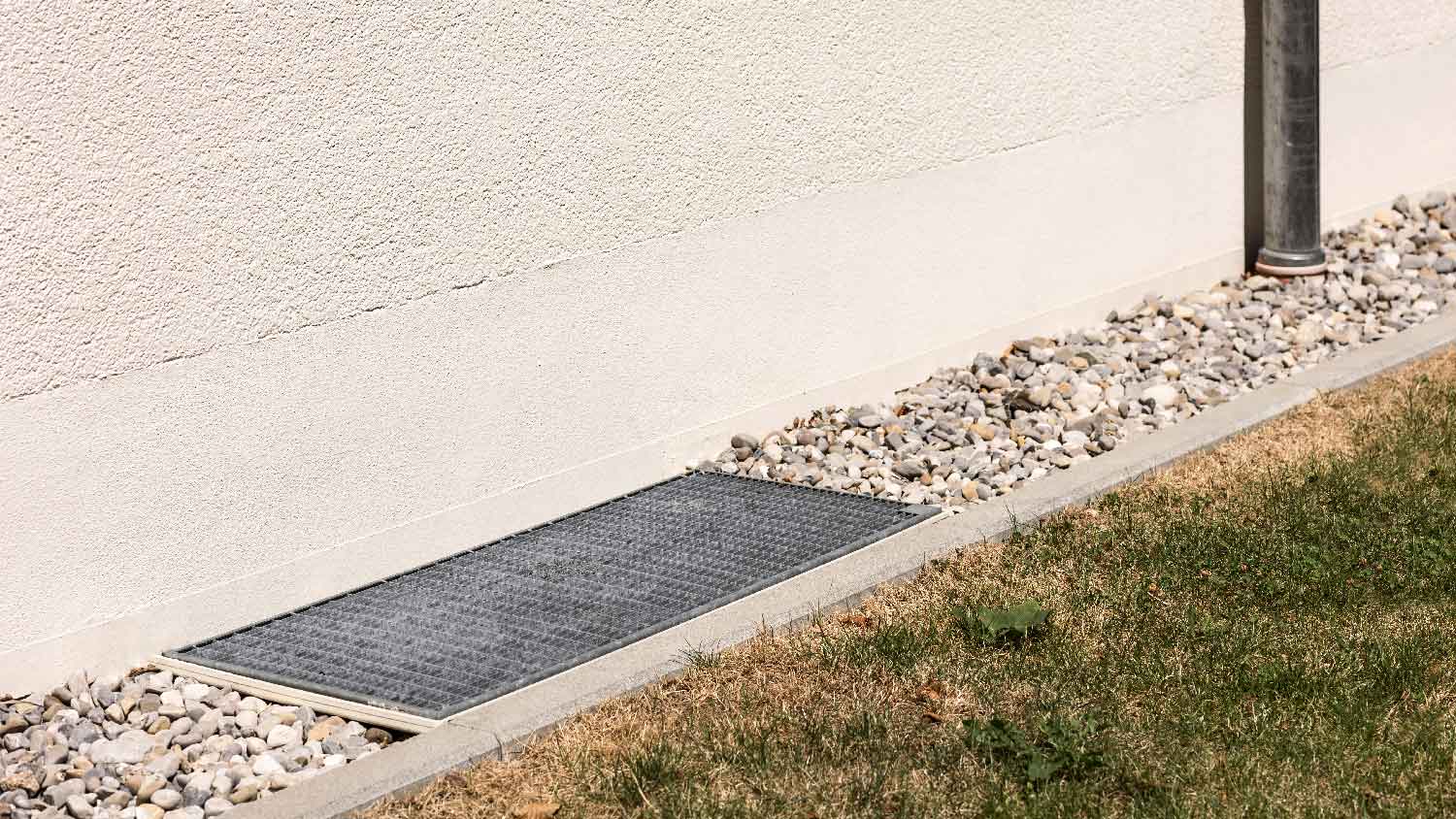
If you have significant pooling in your lawn, you may need to install a French drain to reroute water. A French drain is an underground system of pipes that collects water and redirects it to a different location, such as the street, a rain garden, or near a tree.
You can buy a DIY French drain kit from a home improvement or hardware store. The project involves trenching that runs downhill to a lower part of your property. You can also hire a local drain contractor to install the system and ensure it works properly. Hiring a pro is often the way to go if you need a long or extensive French drain system or have dense, heavy soil.
Gypsum is a mineral that breaks up compacted soil, allowing for better water absorption. You can find gypsum at home improvement and hardware stores. Follow the manufacturer's instructions to apply it to your lawn. The process usually involves spreading the gypsum over your soggy areas and then watering it to help it soak into your soil.
Consider swapping the grass for a rain garden if you have a waterlogged area. Create a depression or berm to intentionally collect water. Your rain garden can be shaped like a basin, river, or trough. Put in native plants and bushes that can tolerate periodic flooding, such as sedge, cardinal flower, and swamp hibiscus. The roots of these plants also filter toxins and contaminants, ensuring they don't enter the groundwater. As a bonus, the area might also attract birds and pollinators to your property.
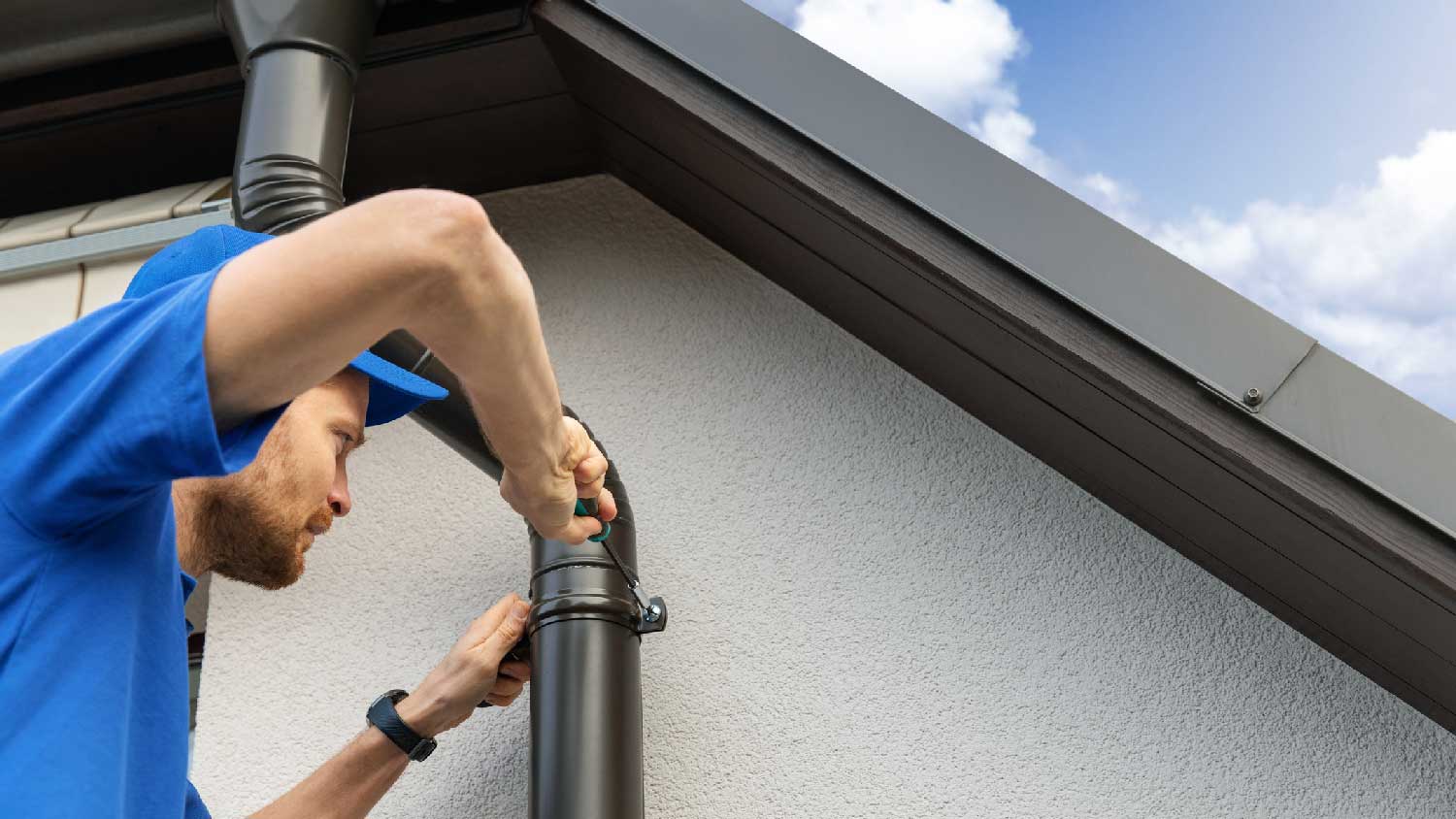
If your gutter downspouts send water toward your lawn, redirect them to another area on your property. You can find joints and pipes for downspouts from your local hardware store or home improvement store. You may need to dig a shallow trench to place the downspout in your desired direction. The slope should always be away from your home's foundation.
In an area with waterlogging, create a channel that carries the water away from the oversaturated spot. Dig and grade the soil so the slope goes downhill. Lay down landscape fabric and place rocks on top to build out the sides of the bed. Plant perennials and shrubs to soften the look. Design a functional space for collecting water that also adds beauty and variety to your outdoor space.
If the roof slope of your house, shed, or garage sends water into your yard, set up a system to collect the rainwater. Consider a rain barrel, or place large buckets in those areas to catch the excess water before it travels to your lawn. You can use the rainwater you collect to water your plants and garden, helping to save on your water and sewer bill.
Note: Rainwater collection is not legal in every state. Research your state’s laws before attempting to set up a rain barrel or other rainwater collection system to avoid a brush-up with the law.
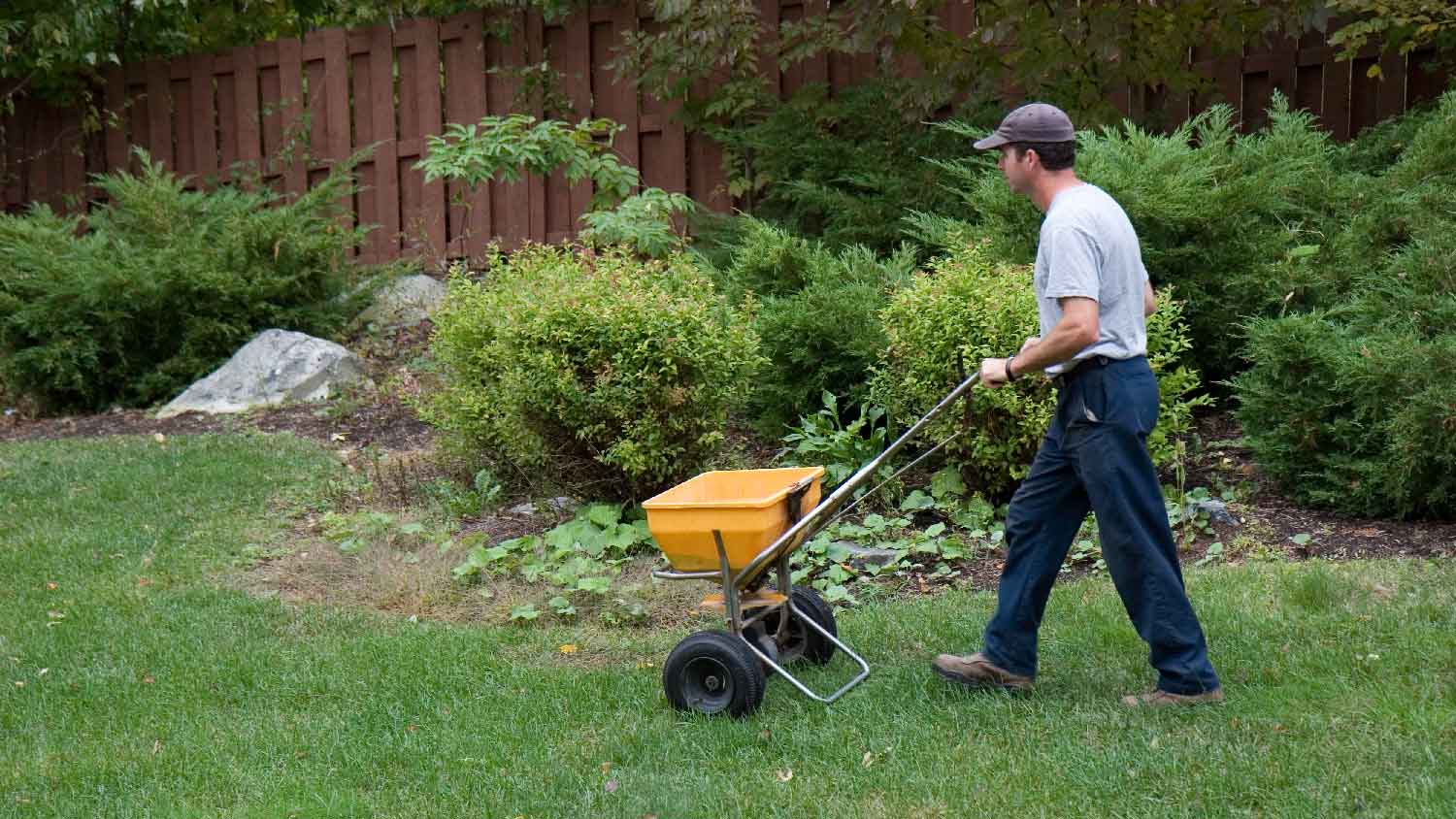
If you've had a soggy lawn for over a month, apply moss killer to prevent moss growth. Apply fertilizer in the spring to help your lawn grow deep roots and lush blades to allow for better water absorption. You can also overseed your lawn in the spring or fall—depending on your type of grass—to ensure your grass is as dense as possible.
To address drainage issues, consider creating your own permeable pathways and patio surfaces. Use stepping stone slabs or bark to form a solid, dry pathway on a wet, soggy lawn. This approach not only improves drainage but also adds character and visual interest to your yard.
If waterlogging affects only specific areas of your lawn, creating raised garden beds can often solve the problem. They’re relatively easy to construct: Simply add an elevated mound of well-draining soil to the affected area and plant flowers or greenery tolerant to high amounts of moisture. The added elevation helps drain and absorb excess water, preventing it from pooling in your yard.
If you’re having major issues with soggy grass, investing in a sump pump may be the best solution. Sump pumps can remove water from your lawn and redirect it to a designated area, helping to prevent your lawn from getting waterlogged. They are often used in low-lying, flood-prone areas and are more effective at removing large amounts of water than French drains.
Lawns with dense, clay-rich soils often experience slow drainage, leading to persistent water logging issues. If possible, changing the soil type in your garden can significantly improve drainage. This process involves digging up and removing the existing clay-heavy soil, then replacing it with fresh, well-draining soil. Although this process can be challenging and costly, the results can be well worth it.
From average costs to expert advice, get all the answers you need to get your job done.

A French drain costs around $9,250 to install, but several factors will determine the final price you pay. Learn the cost to install French drains in this guide.

Discover drip irrigation system cost estimates, key price factors, and ways to save. Get transparent pricing to plan your home irrigation project confidently.

Discover the cost to winterize a sprinkler system, including average prices, key cost factors, and tips to save. Learn what impacts your estimate and how to budget.

Putting your sprinkler system to bed for winter will help avoid damage from freezing temperatures. Use this guide to winterize your sprinkler system.

Whether you need to make a repair or are prepping to winterize your sprinklers, learn how to find your irrigation shut-off valve location with this guide.

Do you know who to call for sprinkler repair? You might be able to DIY replacement sprinkler heads, but a pro is the way to go for major repairs.